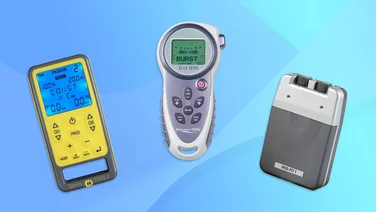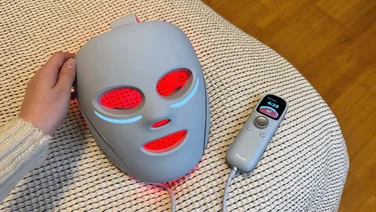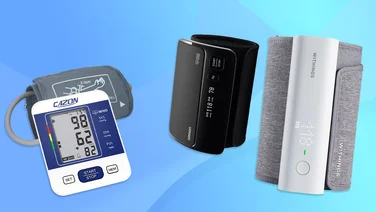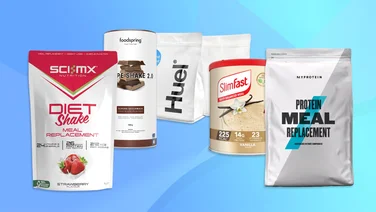To help us provide you with free impartial advice, we may earn a commission if you buy through links on our site. Learn more
- Best tennis racquets for beginners: At a glance
- How to choose the best beginner’s tennis racquet for you
- The best beginners’ tennis racquets you can buy
- 1. Artengo TR500 Lite: Best lightweight tennis racquet for beginners
- 2. Head Radical TI 27: Best racquet for recreational players on a budget
- 3. Babolat Evo Aero: Best beginner racquet for developing spin
- 4. Artengo TR990 Power Pro+: A bulldozer for beginners
- 5. Head IG Challenge MP: Best racquet for ambitious beginners
- 6. Babolat Evoke 102: Best beginner racquet for training hand-eye coordination
- 7. Babolat Boost Rafa: A great beginner racquet for juniors
- A beginner’s tennis racquet glossary

When you start playing tennis, it can be tricky to distinguish a good racquet from a bad one. There’s a lot to get to grips with, from brand and weight to strings and sweet spots. What’s more, how do you know a racquet will be well suited to you and how you want to play? Tennis has a steep learning curve in terms of its equipment and its terminology, so we would like to offer you a hand (that isn’t fore, back, or in any direction, really).
Below, we’ve assembled a list of the best beginner-level tennis racquets, and written a helpful guide that will walk you through some racquet terminology and help you determine which one is the best fit for you.
First, let us say up front: don’t let that steep learning curve put you off. Getting your first tennis racquet should be an exciting thing. It may even end up being something you’ll treasure and look back on for years to come. Plus, the stakes really aren’t that high. Beginner racquets are usually cheaper, so you won’t be flushing too much money down the drain if your first racquet isn’t perfect. In fact, consider failure a success here. If you get a beginner racquet you don’t like the feel of, you’ll know exactly what to avoid when you graduate to your second one.
READ NEXT: Best tennis racquets
Best tennis racquets for beginners: At a glance
- Best lightweight racquet: Artengo TR500 Lite | £60
- Best racquet for ambitious beginners: Head IG Challenge MP | £84
- Best power racquet for beginners: Artengo TR990 Power Pro+ | £100
How to choose the best beginner’s tennis racquet for you
Before we get into things, we’ve supplied a glossary of tennis racquet terms down at the bottom of this article. Tennis racquet terminology can be full of jargon and hard to grasp, so we’ve tried to make it all as simple for beginners as possible. If you struggle to understand any of the terms we use in our racquet reviews, have a look for an explainer down below. They’re good buzzwords to understand going forward, and will help you to understand the technical aspects of tennis racquets.
What are racquets made of?
Most racquets today either have graphite frames or include some sort of carbon fibre composite. Other materials, such as aluminium, titanium or fibreglass, can also be found in some racquets, especially beginner ones, as they help to add more easy power.
Which tennis racquet brand should I choose?
Chances are, you probably have a brand of tennis racquet that you’re attracted to coming in. Whether it’s because of a brand your favourite player uses, or because a coach has recommended one, people find their racquet brand camp pretty quickly. The truth is, most big racquet manufacturers use the same type of technology and, these days, you don’t find many bad ones. Of course, some brands are better at some things than others, but it’s up to you to figure out which feels right for you.
Wilson is leaning more into high-end racquets these days, and Head has an amazing all-round selection. While Babolat is an extremely popular brand the world over, its racquets can be total Marmite depending on who you ask. Some players love them for their spin and power, while others can’t stand them because of their stiffness and lack of feel.
On the other hand, Babolat racquets are stiffer, but they’re also some of the most user-friendly and very forgiving racquets for new players. Speaking of Babolat, we’re still testing out a few racquets it’s been kind enough to send us, so be sure to check back here soon for our recommendations.
READ NEXT: The best badminton racquets to buy
Should I be worried about tennis elbow?
There are definitely racquets out there that will make your life harder if you’re prone to injuries such as tennis elbow, but the majority of beginners’ racquets are designed to be easy on your arm. The short answer is, no, don’t shape your entire decision around fear of tennis elbow, because the truth is that a lot of the problems that create tennis elbow are to do with your swing technique and the musculature of your lower arms.
If you know for a fact that tennis elbow is an issue, stick to a racquet with a lower stiffness rating, and ask your local stringer for strings that won’t make the issue worse.
Do I need a ladies racquet?
It used to be the case that every racquet came with male and female models. Sometimes, that’s still the case, but most brands have consolidated their ranges into light models, mids and heavier “pro” variants. This is a much better solution.
You don’t need to worry about buying specifically for your gender, especially with beginners’ racquets. They’re all forgiving, they all tend to be easy on the arm. If you’re looking for a lighter variant, take a look at the stiffness rating and weight in our “Key specs” at the bottom of each short review below.
The best beginners’ tennis racquets you can buy
1. Artengo TR500 Lite: Best lightweight tennis racquet for beginners

Price when reviewed: £60 | Check price at DecathlonArtengo is a lesser known brand of tennis racquet that’s made by Decathlon. Its somewhat lesser reputation compared to giant brands such as Head, Babolat and Wilson isn’t any indication of quality, however, as this solid beginners’ racquet demonstrates. It’s light, and offers brilliant feel for something under the £100 mark. With comfort this great in a beginners’ racquet, you’ll have the freedom to try a wide range of shots, and you’ll be able to pick up on the different sensations of each. It might sound silly, but feeling the sensations of each shot in tennis is hugely beneficial when you’re starting out, because it will train you to make small adjustments as and when needed in the future.
Weighing in at only 265g, with a swing weight of only 235g, the TR500 Lite feels like a total featherweight compared to the 300g high-end racquets we’ve tested for our best racquets roundup, but still generates solid power and spin. We would especially like to recommend this racquet to anyone who is particularly worried about their elbows. Importantly, the TR500 Lite is also nice and forgiving, with a generously sized sweet spot – exactly what you want from a beginners’ racquet.
Key specs – Head size: 102 square inches; Weight: 256g (unstrung); Composition: Carbon fibre, graphite; Stiffness rating: 65
2. Head Radical TI 27: Best racquet for recreational players on a budget

Price when reviewed: £25 | Check price at DecathlonMaybe you’re a beginner that doesn’t know if tennis is really for you, but you would like to give it a try. Or maybe you’re just operating on a strict budget. If either of those sound like you, this is a solid little option. The Head Radical range is one of the most popular lines of racquets in the industry, and this budget option is a nice way to ease you into racquet selection.
We won’t lie: usually if you buy this cheap, you’ll buy twice. But sometimes, the best way to know what you want from a tennis racquet is to recognise early what you don’t want and buy accordingly if you want to continue with the sport later.
This racquet is suitable for male or female beginners and will give you everything you need while starting out. Its composition features aluminium, which will offer nice power and durability. Recreational players have nothing to lose with this one.
Key specs – Head size: 102 square inches; Weight: 275g (unstrung); Composition: Aluminium, graphite; Stiffness rating: 65-70
3. Babolat Evo Aero: Best beginner racquet for developing spin

Price when reviewed: £155 | Check price at BabolatThe latest in Babolat’s Evo range is the companion to the 2023 Pure Aero, their most popular and well-known racquet. The Evo range is designed for those who are trying to improve their game, providing more feel and comfort than the brand’s higher-end offerings while not compromising on each frame’s selling points. The Pure Aero line is known for its easy access to spin and power, and the evo Aero provides those in abundance. Testing this racquet was surprisingly fun, especially as someone with extensive experience with the Pure Aero line. There was the usual access to spin and power, but a lighter weight and vastly improved feel – to the extent it makes you wonder why Babolat’s Evo Feel technology isn’t implemented into their more mature frames.
If you’re training to become the next clay court legend, or you’re already finding that you can put lots of top spin on the ball, this is definitely a racquet to consider. Using something like the Evo Aero will facilitate your growth as a baseliner, and will provide an easy stepping stone to the Pure Aero or Pure Drive racquets when you’re ready to move on.
Key Specs – Head size: 102 square inches; Weight: 275g (unstrung); Composition: Graphite; Stiffness rating: 64
4. Artengo TR990 Power Pro+: A bulldozer for beginners

Price when reviewed: £100 | Check price at DecathlonThis is one for the strongest and most athletic beginners out there. The Artengo TR990 Power Pro+ packs some ridiculous heat for a racquet of this price. If you’re transferring to tennis from another sport or you just love the feeling of coming out on court and blitzing the ball as hard as you can, this may be a match made in heaven. Be warned, though, for anyone worried about their forearms, elbows or wrists – stay away. With an unstrung weight of 300g, a hefty swing weight of 295g and a stiffness rating of 70, tennis elbow is definitely more of a risk here. Artengo has used a high modulus carbon here, which makes it feel like more of a bat than a racquet.
What’s truly unique here is that it’s a slightly longer racquet than the other beginners’ racquets on this list. Racquet length usually doesn’t come into the equation all too often because it’s almost always the same. Occasionally, though, you do get longer racquets that, thanks to their increased leverage, offer you more power. So with all this added up, you’ll start to realise why we’ve dubbed this racquet a bulldozer for beginners. Sometimes to the detriment of control and forgiveness, this racquet absolutely crushes the ball.
If you have the muscle to control it and aren’t worried about injury, give this one a crack. What we can say for certain is you’ll have a load of fun using it.
Key specs – Head size: 100 square inches; Weight: 300g (unstrung); Composition: High modulus carbon, graphite; Stiffness rating: 70
5. Head IG Challenge MP: Best racquet for ambitious beginners

Price when reviewed: £84 | Check price at TennisnutsAspiring to sky-rocket through the club ranks and make some serious progression? Sounds to us like you need a weapon that will help you along the way. We can recommend this great racquet from Head. Designed with motivated beginners in mind, the IG Challenge MP provides great access to power and spin. As you develop your technical skills, you’ll continue to get more and more out of this racquet, and that’s ideal. At the same time, you’ll also benefit from a generous sweet spot coming from the 100in² head size, and your arm will have the freedom to swing without worry of strains or sprains thanks to an unstrung weight of 275g. Its stiffness rating is a memory foam-like 66.
Most impressively, this is one of the only beginners’ racquets you’ll find that has a fully graphite composition. While the other materials can make life easy, sometimes starting as you mean to go on can help you to develop skills early. Any second or third racquets you buy will be easy to transition to after using the Challenge MP. After testing the Head Boom MP, this racquet would serve as a blissful stepping stone toward it.
And not that cosmetics really matter, but the paint job on this one is particularly nice for a racquet under £100.
Key specs – Head size: 100 square inches; Weight: 275g (unstrung); Composition: Graphite; Stiffness rating: 66
6. Babolat Evoke 102: Best beginner racquet for training hand-eye coordination

Price when reviewed: £36 | Check price at Tennis NutsWhere the Evo Drive feels like a entry level option for the Pure Drive range, the Evoke 102 feels like the perfect starter racquet for something like the Babolat Pure Strike used by Dominic Theim. At first, control and power were quite hard to come by with this frame. Balls were either flying long or landing a little short. The sweet spot feels a bit smaller than most Babolat frames, and for that reason, the Evoke 102 actually stands out from any other beginner racquet on this list. Strike the ball in the middle of the string bed, be rewarded. Have some inconsistencies in your technique, this racquet will point them out.
For the most part, a great beginner racquet should be more forgiving and make a player’s life easier. We won’t claim that this racquet will make your life harder – the 102 square inch head size is more generous than other options on this list. But sometimes, a racquet that isn’t as generous with sweet spot, control or even power can be a fantastic thing for a beginner. It forces you to correct your technique and hand-eye coordination early, and when you eventually graduate to a second or third frame, you’ll look back at something like the Evoke 102 with the utmost gratitude.
Key Specs – Head size: 102 square inches; Weight: 270g (unstrung); Composition: Fused graphite; Stiffness rating: 58
7. Babolat Boost Rafa: A great beginner racquet for juniors

Price when reviewed: £75 | Check price at Decathlon This budget version of Nadal’s racquet of choice is a good option for any juniors who are looking to develop their game. The Pure Aero line from Babolat is great for players who want easy access to spin and power, and the Boost Rafa emulates that in a much lighter frame. Its fairly high stiffness rating of 70 would be one of the few downsides here, but it’s offset by a low weight of 260g. The power of this racquet needs to come from somewhere, and during testing the Boost Rafa’s stiffness never felt like an issue.
This is a great option for junior players because while you’re young, you don’t necessarily have the power to generate winners and highly aggressive tennis. At early ages, you need to develop your game sense and your ability to build rallies, and this racquet will allow you to do that. This could also be an option for older beginners who are looking for an extremely manoeuvrable racquet, too.
Key Specs – Head size: 102 square inches; Weight: 260g (unstrung); Composition: Graphite; Stiffness rating: 70
A beginner’s tennis racquet glossary
- Weight is, well, you guessed it, how much mass a tennis racquet has. One thing to pay attention to is the balance of this weight, however, as some racquets place more weight toward the top of the racquet (head-heavy), and others tend to be more balanced. Most racquets on the advanced level weigh around 300g unstrung, but beginners’ racquets and junior racquets can be lighter to put less strain on the muscles you’ll need to develop as you progress.
- Swing weight is the result of a racquet’s weight and balance. It refers to how easily the racquet is swung through the air. The higher a racquet’s swing weight, the harder it is to swing through the air. Beginner racquets in particular are often on the lighter end of this scale because it makes it easier for you to generate racquet head speed in your shots. It also lets you develop your forearm muscles without developing a nasty case of tennis elbow.
- The sweet spot is the most powerful part of the racquet. This central section of the string bed offers the most power, feel and consistency. When you hit a ball with the sweet spot of a racquet, the force generated will feel balanced and as though the racquet has done the work for you. When you hit a ball outside of the sweet spot, you’ll definitely feel a difference. Generally for beginners, you want the biggest sweet spot available while you develop your hand-eye coordination.
- Stiffness is how flexible a racquet frame is if you tried to fold it in on itself. Racquets with a lower stiffness rating offer you more control and feel over the ball. They tend to be more user-friendly and better suited to beginners, as you don’t have to rely on technique that you’re still learning. Racquets with higher stiffness ratings are more powerful, but they can often cause more injuries to arms and elbows. Although there are some exceptions, we would recommend a more flexible racquet for your first one. Stiffness is rated on a scale of 0-100, with 100 being the stiffest. Most racquets rate between a 50 and an 80.
- Grip size is the girth of a racquet’s handle. This can often be the most confusing part about measuring racquets, but there are useful guides that can help.
- Head size is the area of the string bed, which we measure in square inches. The head size of a racquet can affect how big its sweet spot is. The bigger the head size, the bigger the sweet spot. The majority of racquets use a 100 square inch head size, and we would say this is a solid head size to aim for if you’re a new player, but don’t be afraid to go a little bigger.
- String pattern is the ratio of strings that are held in a racquet. There are various ratios used by differing manufacturers, but the most commonly found string patterns are 16×19 and 18×20. These ratios refer to the number of mains strings (vertical ones) to crosses (horizontal ones). So a racquet with a 16×19 string pattern has 16 vertical strings and 19 going across the middle of the racquet. On the whole, a less dense string pattern such as the 16×19 pattern will give you more spin potential because it will mean a lower surface area coming into contact with the ball. A tighter packed string pattern will give you access to more control.
- Strings are probably one of the most important things about a tennis racquet. Annoyingly, they’re a totally separate entity from racquets themselves, and they would require a whole different glossary of terms. For beginners, what you need to know is that novice racquets you buy will use factory strings. These are the worst strings you can get, and they will probably break pretty quickly. As soon as you get your racquet strung up with real strings, you’ll never want to play with factory ones ever again.
There are strings for power, control, spin and feel, and the best part is you can mix them up by putting one type of string in the mains, and another one in the crosses. This is called a hybrid. If you want to learn more about strings, we would recommend you play your factory strings to death, then ask a coach or racquet shop about getting your frame restrung. If you tell them you’re a beginner, they will be able to recommend a good string to try out. Like racquets, you should try as many as you can and see what you like best.





